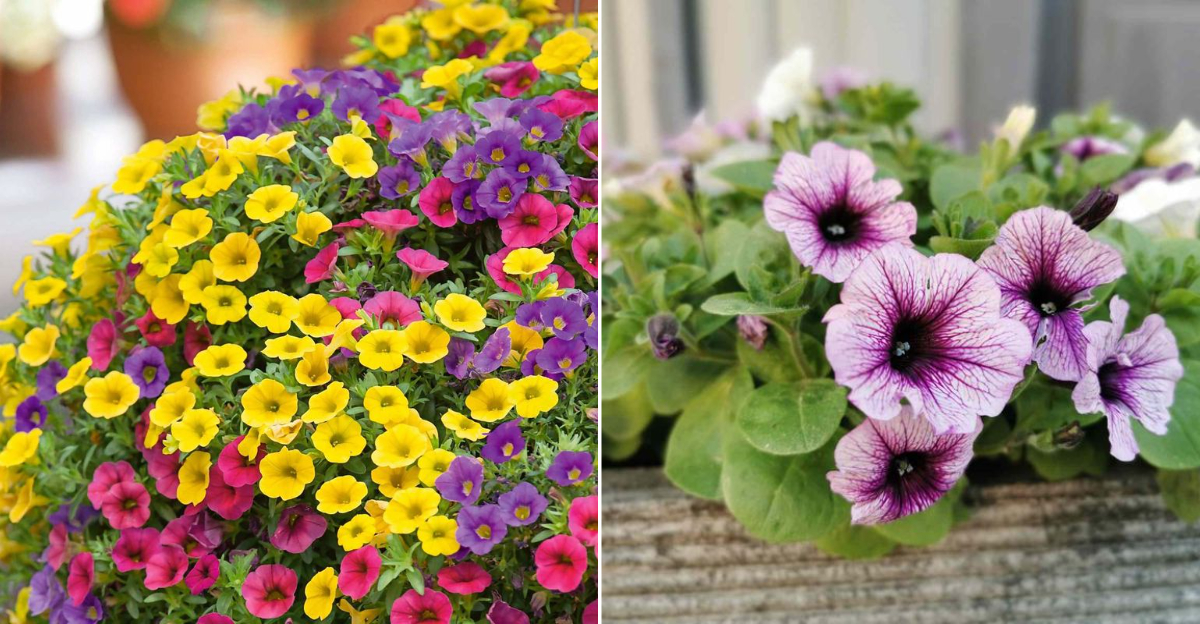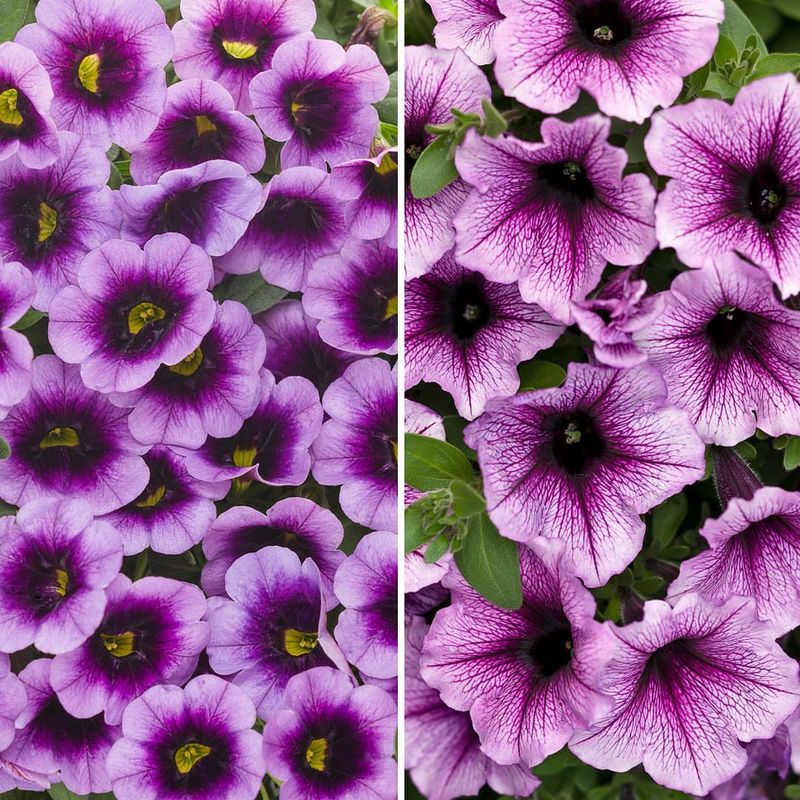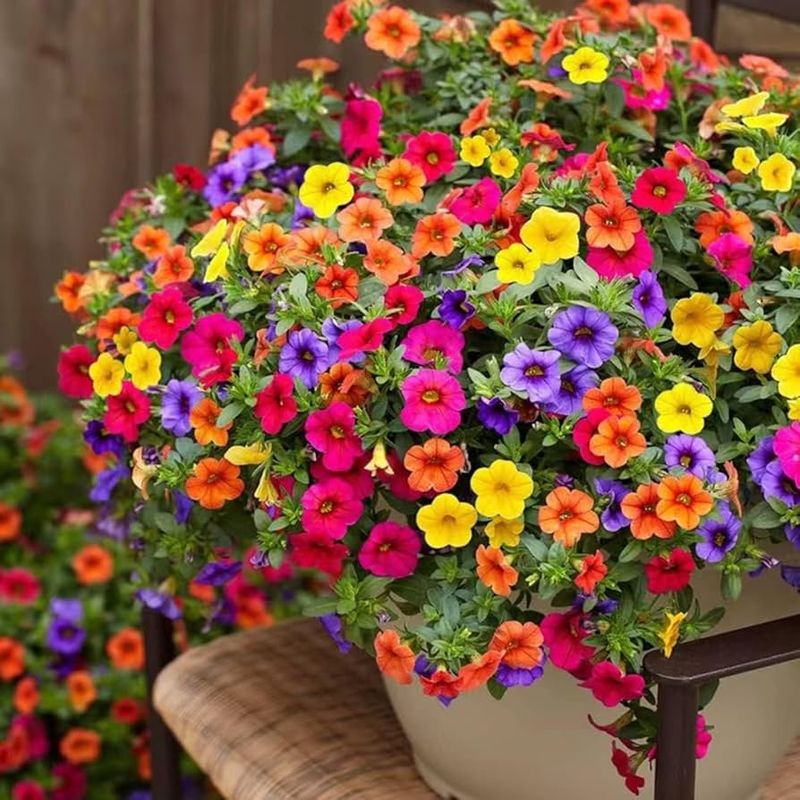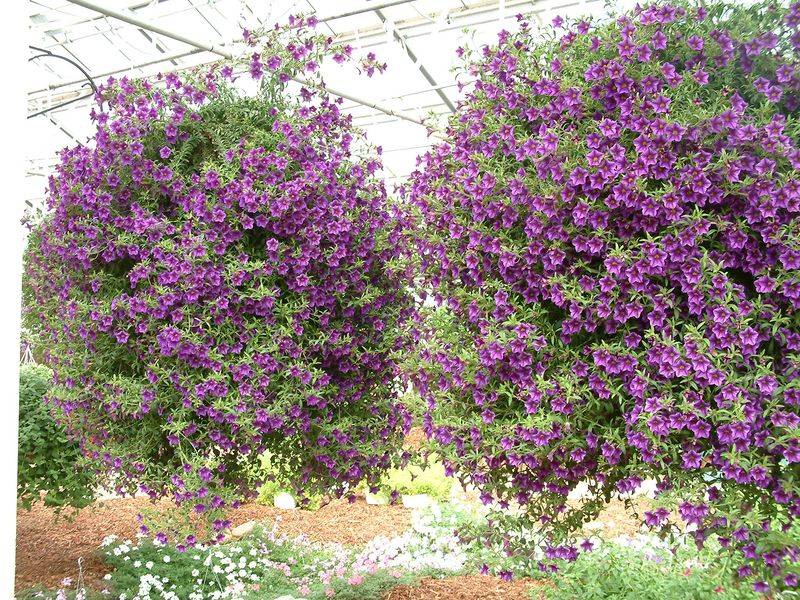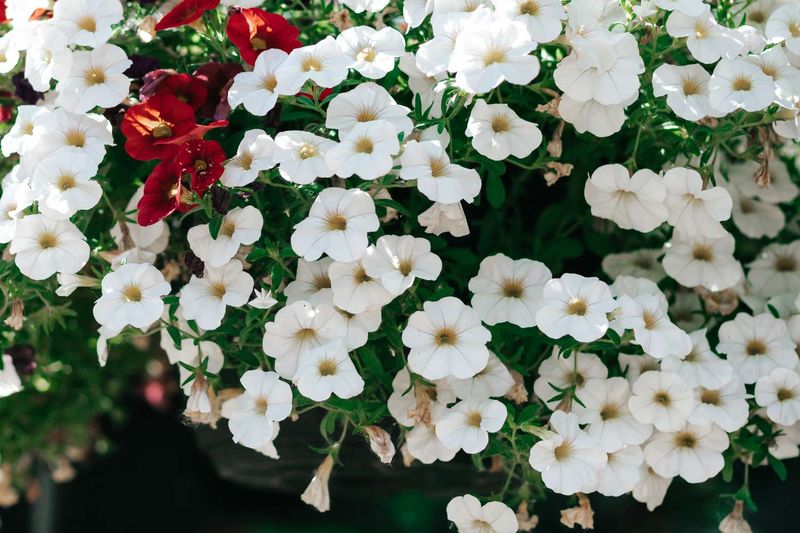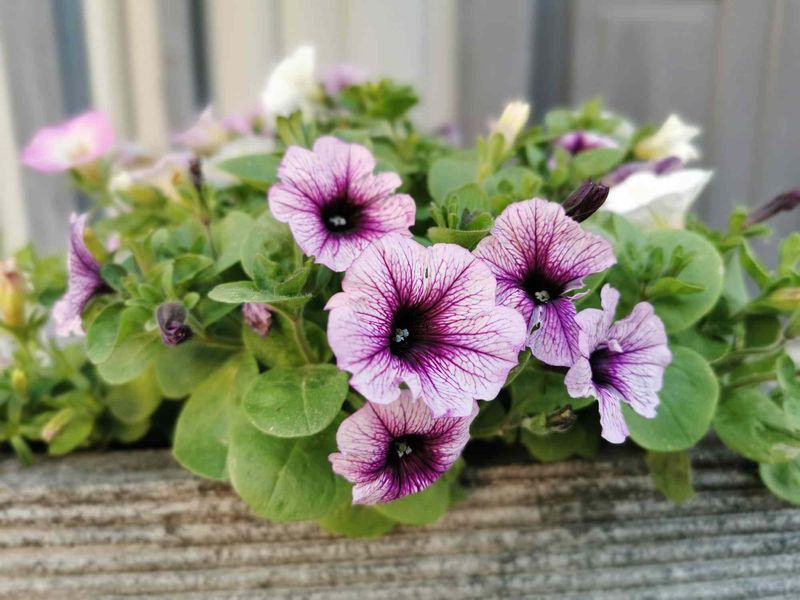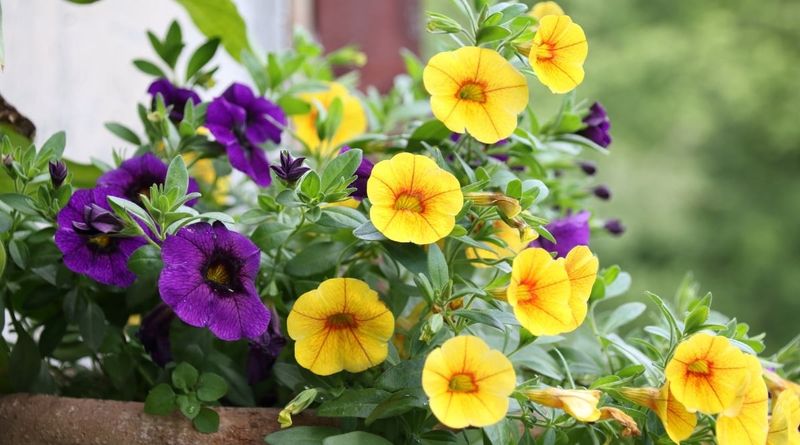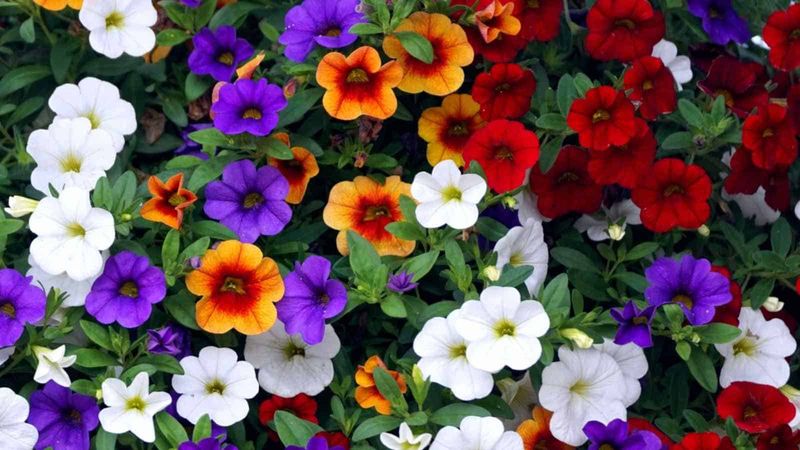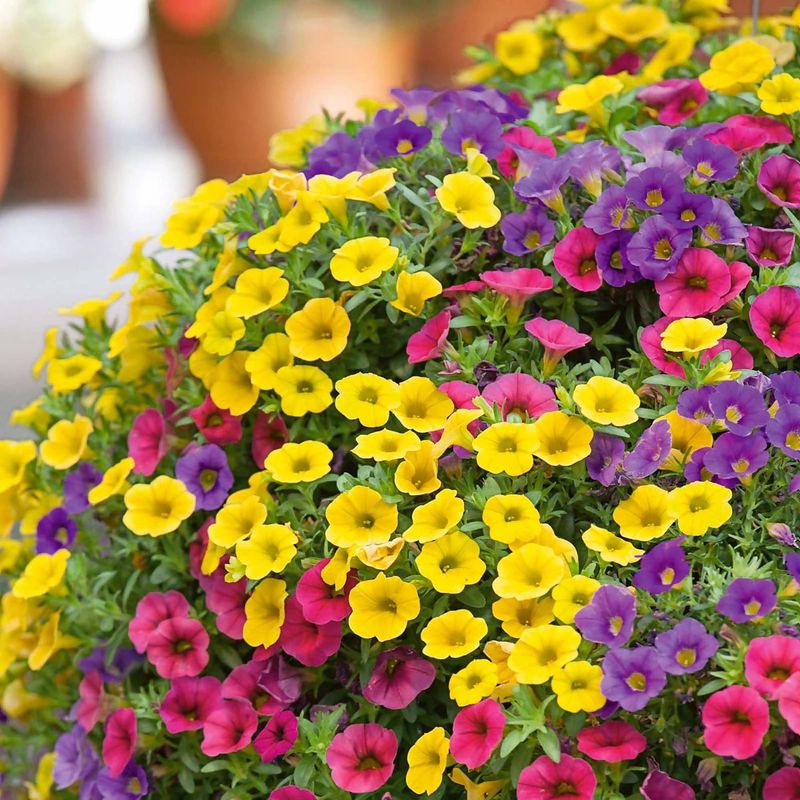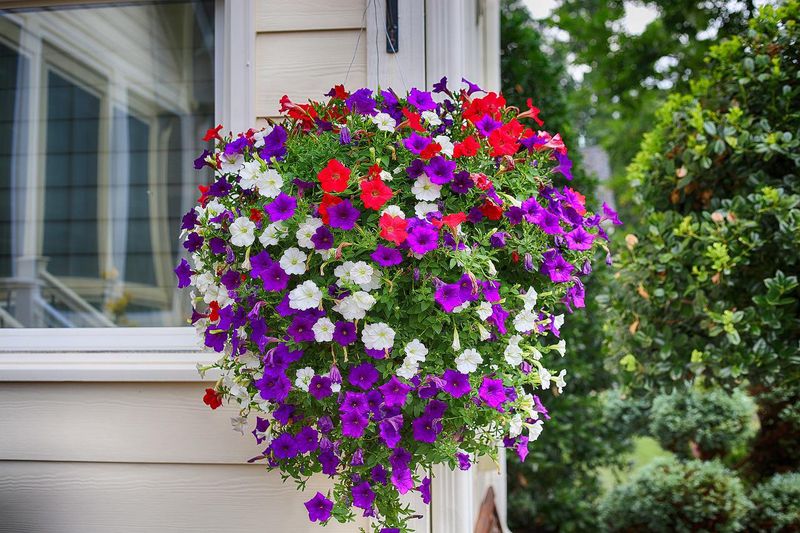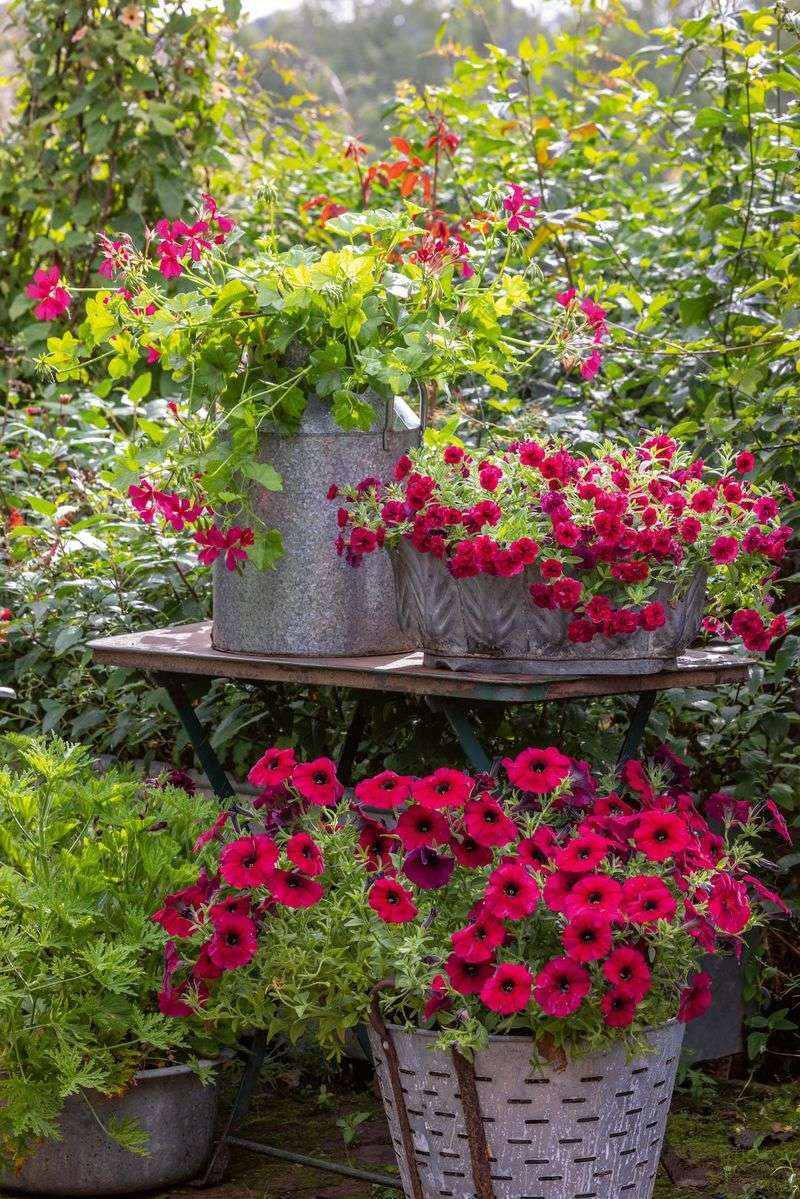In the vibrant world of flowering plants, Million Bells and Petunias often capture the attention of garden enthusiasts. Despite their similarities, these two beauties boast distinct characteristics that even seasoned gardeners might overlook.
Join us as we explore ten surprising differences between Million Bells and Petunias, each with its unique charm and appeal for your garden.
1. Flower Size and Shape
Million Bells, known for their petite blossoms, charm gardeners with a profusion of tiny, bell-shaped flowers. These dainty blooms create a carpet-like effect, ideal for baskets and containers.
In contrast, Petunias boast larger, trumpet-shaped flowers that stand out in any garden setting. Their bold presence makes them a favorite for flower beds. While Million Bells create a subtle tapestry of color, Petunias command attention with their grand display.
Both offer unique aesthetics, but their flower size and shape cater to different design preferences. Discover which style suits your garden’s personality.
2. Color Variety
A kaleidoscope of colors awaits with both Million Bells and Petunias, yet their palettes offer distinct experiences. Million Bells often grace gardens with pastel hues and soft tones, creating a serene, soothing ambiance.
On the other hand, Petunias dazzle with vibrant, bold shades, from deep purples to fiery reds. These intense colors inject energy and drama into any garden.
Whether you’re drawn to the calm elegance of Million Bells or the vibrant vivacity of Petunias, each plant offers a unique spectrum for your outdoor space.
3. Growth Habit
Gardeners often choose Million Bells for their trailing habit, perfect for cascading over the edges of pots and hanging baskets. This growth pattern creates a flowing, waterfall effect that adds movement to a garden.
In contrast, Petunias typically grow in a more upright, bushy manner, making them ideal for filling garden beds with lush blooms.
The contrasting growth habits offer versatile landscaping options: opt for Million Bells for graceful draping or Petunias for structured elegance. Both styles complement different gardening aesthetics and needs.
4. Bloom Duration
When it comes to bloom duration, Million Bells often have the upper hand. These resilient beauties bloom continuously from spring through fall, ensuring a long-lasting display of color.
Meanwhile, Petunias, while prolific, may require more maintenance to sustain their blooms, often needing deadheading to promote new growth.
The extended bloom period of Million Bells makes them a favorite for those seeking low-maintenance beauty. In contrast, gardeners willing to invest extra care may find the reward of Petunias’ vibrant blooms equally satisfying.
5. Climate Tolerance
Million Bells and Petunias differ in their adaptability to various climates. Million Bells thrive in full sun, displaying exceptional tolerance to heat and humidity. This makes them ideal for warmer regions where they can flourish with minimal fuss.
Conversely, Petunias, though sun-loving, tend to prefer cooler climates, where they can exhibit robust growth without wilting.
Their climate preferences mean that choosing between these two depends largely on your local weather conditions, allowing you to match the right plant to your garden’s environment.
6. Foliage Texture
The foliage of Million Bells and Petunias adds another layer of interest to these plants. Million Bells feature small, narrow leaves that provide a delicate backdrop to their prolific blooms.
This subtle leaf texture complements their overall refined appearance. Petunias, however, are characterized by broader, slightly sticky leaves that add a different texture dimension.
Their foliage can sometimes deter pests, acting as a natural defense mechanism. By examining the foliage texture, gardeners can choose a plant that adds the desired aesthetic and functional qualities to their garden.
7. Pest Resistance
Pest resistance is a key consideration for many gardeners. Million Bells often boast greater resilience against common garden pests, thanks to their hardy nature. This resistance can result in healthier plants with less intervention.
Petunias, while beautiful, can sometimes attract pests like aphids, requiring more vigilant care to keep them thriving. Understanding each plant’s pest resistance can help you choose the best fit for a lower-maintenance garden.
Choosing between Million Bells and Petunias may come down to how much effort you’re willing to invest in pest control.
8. Soil Preference
Million Bells are less picky about soil conditions, thriving in well-drained soils rich in organic matter. Their adaptability to various soil types makes them a versatile choice for different garden settings.
Petunias, however, often require more specific soil conditions, preferring soils that are slightly acidic and well-drained. Understanding these preferences is crucial for successful cultivation.
By matching the plant to the soil conditions of your garden, you ensure healthy growth and vibrant blooms, whether you’re planting Million Bells or Petunias.
9. Watering Needs
Watering needs vary between Million Bells and Petunias, an important factor in garden planning. Million Bells prefer consistent moisture but are relatively drought-tolerant once established.
This makes them suitable for gardeners who prefer a more hands-off approach. Petunias, however, require regular watering to maintain their lush appearance, especially in hotter climates.
Their thirstier nature demands more attention, making them ideal for those who enjoy daily gardening rituals. Knowing the watering needs helps in planning a garden that aligns with your lifestyle and gardening habits.
10. Scent
While Million Bells are not typically known for fragrance, Petunias often emit a sweet, captivating scent, particularly in the evening. This aromatic quality can enhance the sensory experience of a garden, attracting both people and pollinators.
For those who prioritize fragrance, Petunias may offer that extra sensory delight. Million Bells, though lacking in scent, compensate with their visual appeal and resilience.
The choice between these plants can depend on whether fragrance or floral abundance is more important to you, allowing for a garden tailored to your sensory preferences.
